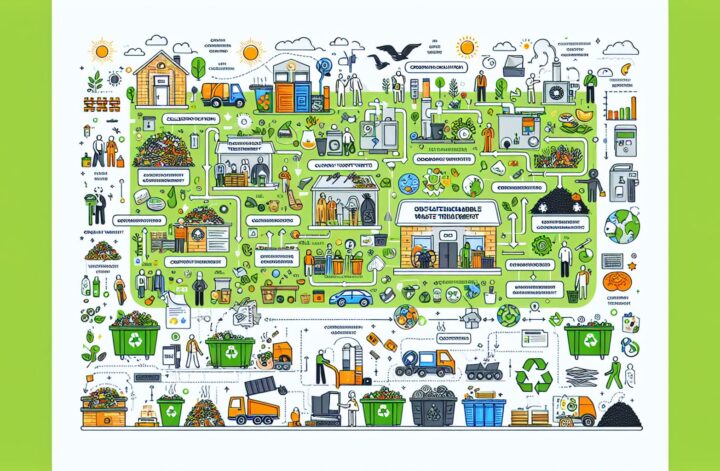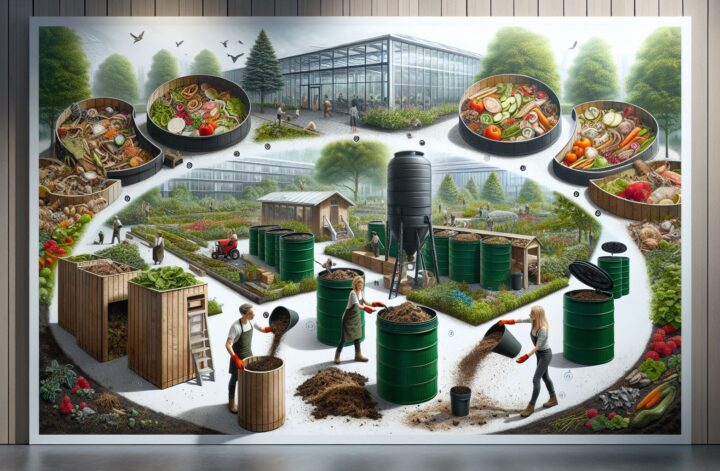In the face of rising energy demands and growing global crises in climate change, renewable energy has emerged as a viable solution for mitigating environmental impacts while meeting energy demand. Various types of renewable energy sources have been investigated and implemented including solar power, wind energy, geothermal energy, and biomass. But today we’re going to concentrate our attention on biogas production and other associated processes that play a crucial role in the renewable energy sector. Studies have shown that bioenergy, particularly biogas, has the potential to be a significant part of the solution to our sustainable energy needs [1].
What is Biogas?
At its core, biogas is a type of biofuel produced from the decomposition of organic matter by microbes under anaerobic conditions (i.e., in the absence of oxygen). The primary constituents of biogas are methane and carbon dioxide with traces of other gases. In proximity to the process of biogas production, other essential aspects and terminologies need to be familiar, including anaerobic digestion, co-digestion, biosolids, and digestate.
Anaerobic Digestion and Co-Digestion
Anaerobic digestion refers to the biological process in which microorganisms break down organic materials in the absence of oxygen. This is considered a highly efficient, eco-friendly process for the treatment of a wide variety of organic wastes including agricultural residues, municipal wastes, and industrial sludge [2].
In the context of anaerobic digestion, co-digestion is a practice where two or more waste types are digested together to produce biogas. This method increases the overall yield of biogas and has been found to enhance the nutrient balance of the system, thus making the process more stable and efficient [3].
Biosolids and Digestate
Biosolids is a term used to describe the organic sludge produced during wastewater treatment which has undergone additional processing for pathogen reduction, making it safe to use as a soil conditioner. Digestate, the by-product of anaerobic digestion, is a nutrient-rich substance that can act as a quality, organic fertilizer for crops [4].
The Significance of Renewable Energy and Biogas Production
Steady advancements in technology and infrastructure have made the production and use of renewable energy more accessible and cost-effective. This shift towards renewable energy is a crucial step in reducing our carbon footprint and reliance on fossil fuels that contribute to climate change.
Biogas production plays a pivotal role in this shift towards sustainability. It not only offers a source of renewable energy but also provides a beneficial way of managing the abundant organic waste that otherwise goes unexploited or incinerated, contributing to carbon and methane emissions. Through the anaerobic digestion process, these wastes can now be harnessed to generate energy, reducing greenhouse gas emissions, and contributing to a circular, sustainable economy [1].
Future Perspectives
The utilization of renewable energy technologies, such as biogas production, continues to proliferate worldwide. They hold the key to meeting our energy demands while mitigating environmental impacts, supporting economic growth, and promoting sustainable practices. Ongoing research and development in enhancing the efficiency and profitability of biogas production will undoubtedly lead to promising improvements and broader application in the future.
We need to remember that our journey towards achieving sustainable energy solutions is a marathon, not a sprint. And while we’re making remarkable progress in leveraging renewable sources like biogas, there is still great scope for advancement and refinement. New technologies, policy reforms, and societal changes on a global level will play a vital part in shaping the future of an energy world where renewables take center stage.
References
[1] IEA (2019), “Renewable Energy: Bioenergy”, IEA, Paris https://www.iea.org/renewables2019/bioenergy/
[2] Deublein, D.; Steinhauser, A. (2008) Biogas from Waste and Renewable Resources. Wiley-VCH Verlag GmbH & Co. KGaA. https://doi.org/10.1002/9783527621706
[3] Holm-Nielsen, J.B., Al Seadi, T., Oleskowicz-Popiel, P. (2009), “The future of anaerobic digestion and biogas utilization.” Bioresource Technology, 100 (22), pp. 5478–5484.
[4] U.S. Environmental Protection Agency (2016) “A Plain English Guide to the EPA Part 503 Biosolids Rule.” https://www.epa.gov/biosolids/plain-english-guide-epa-part-503-biosolids-rule




